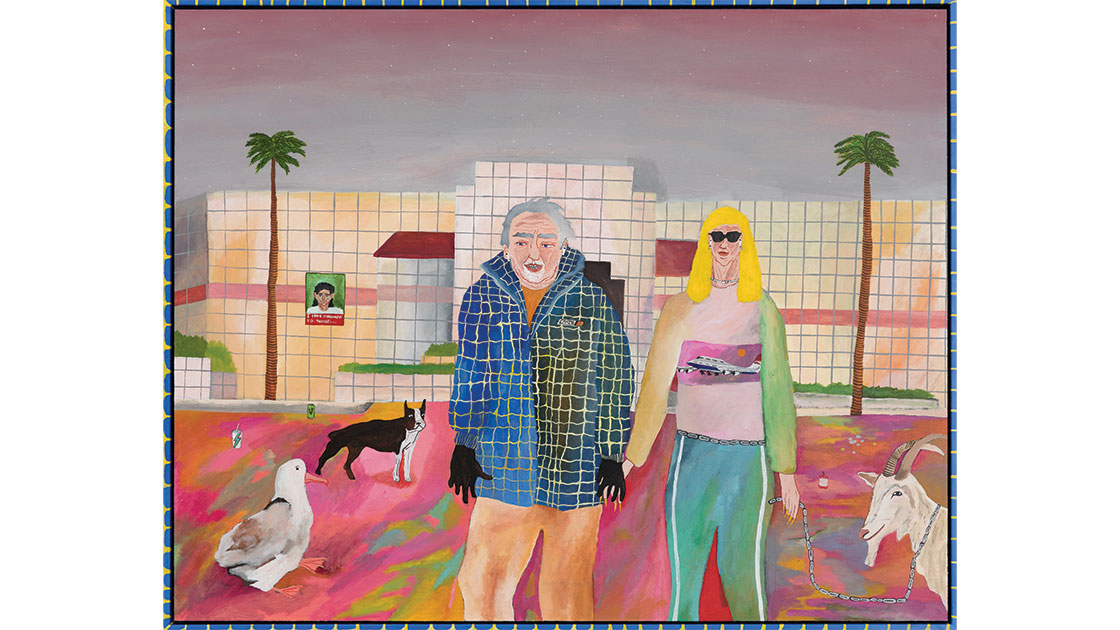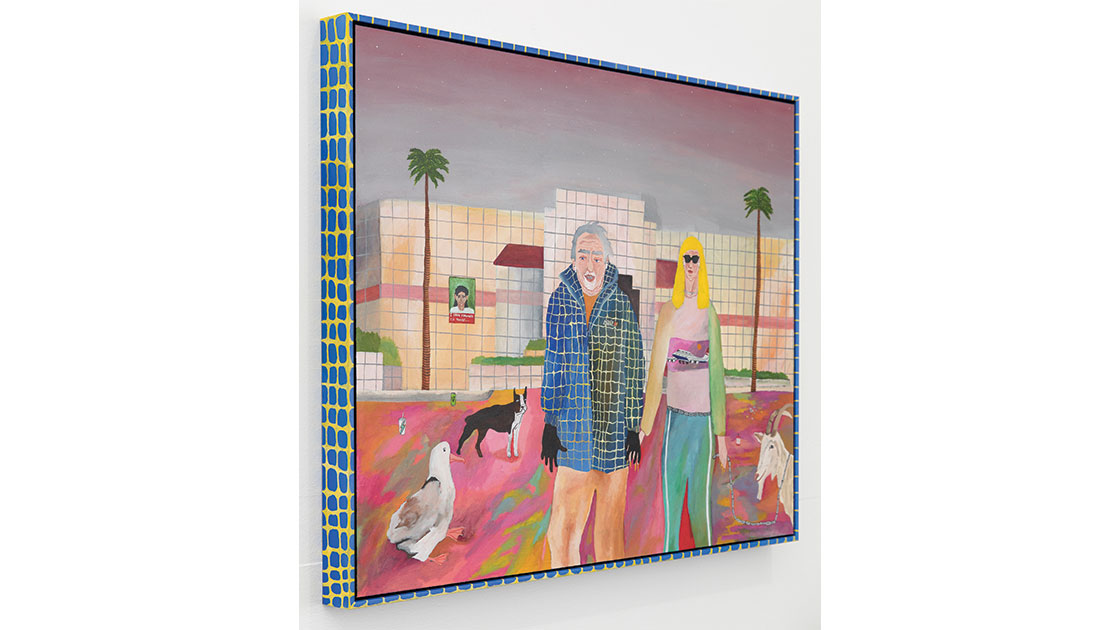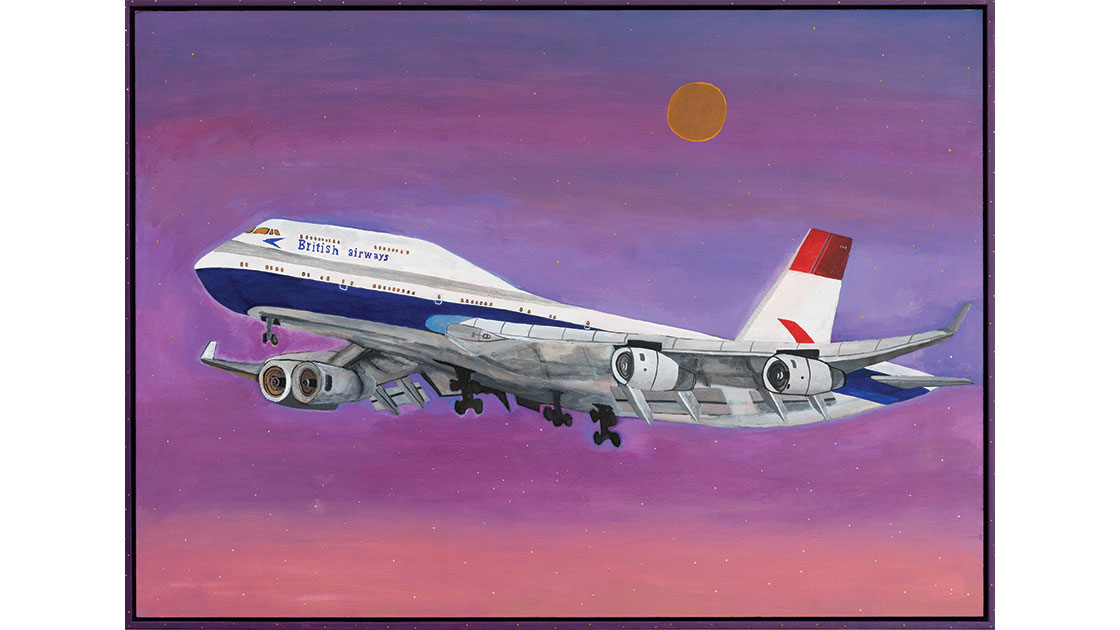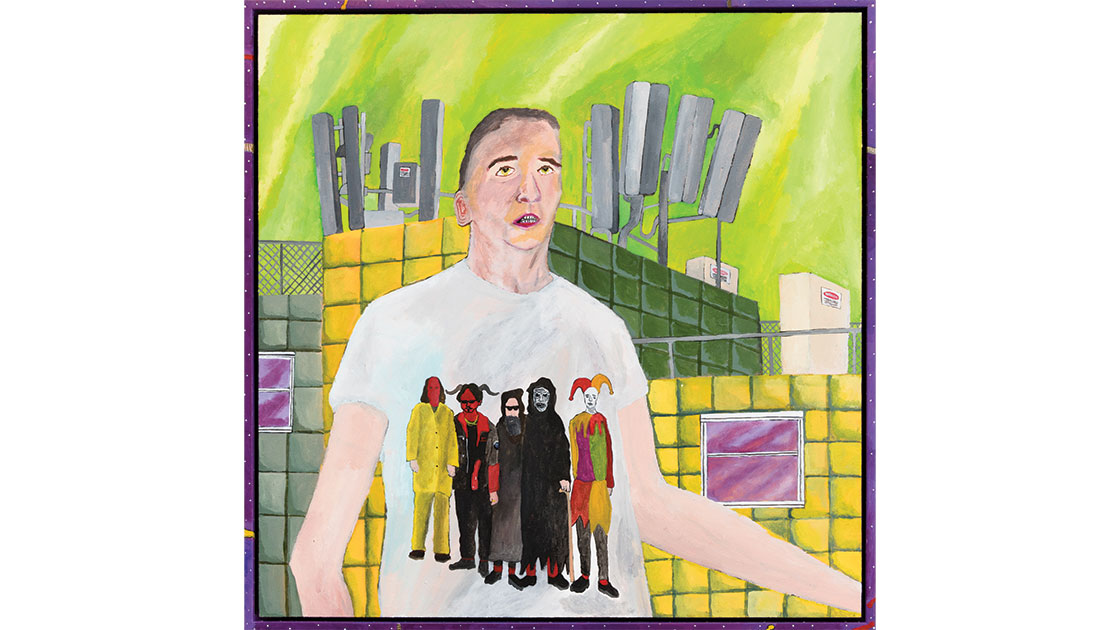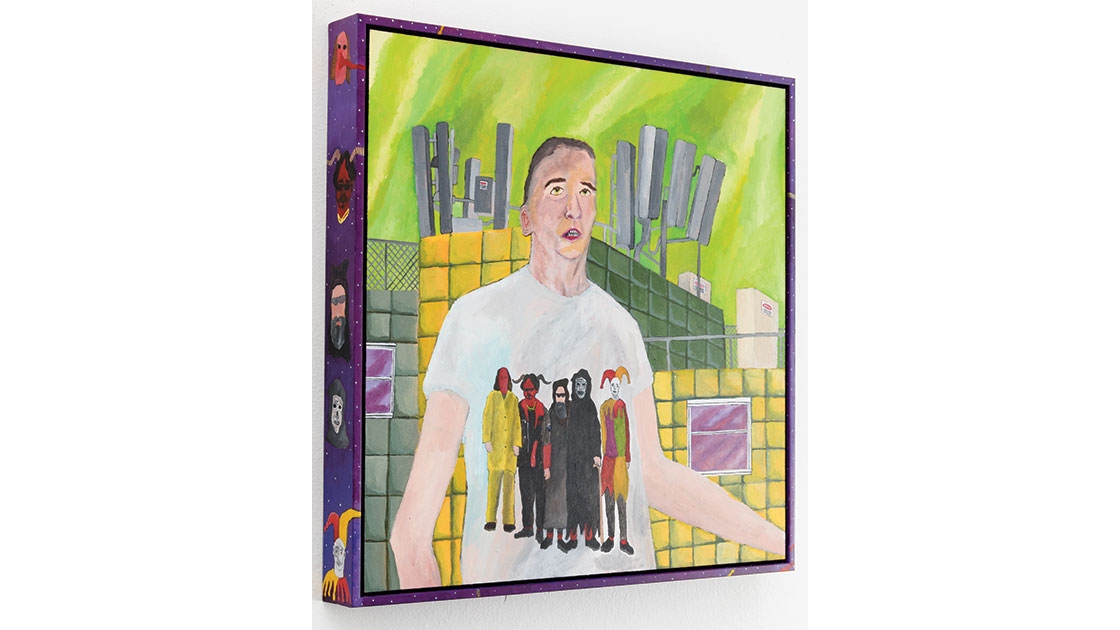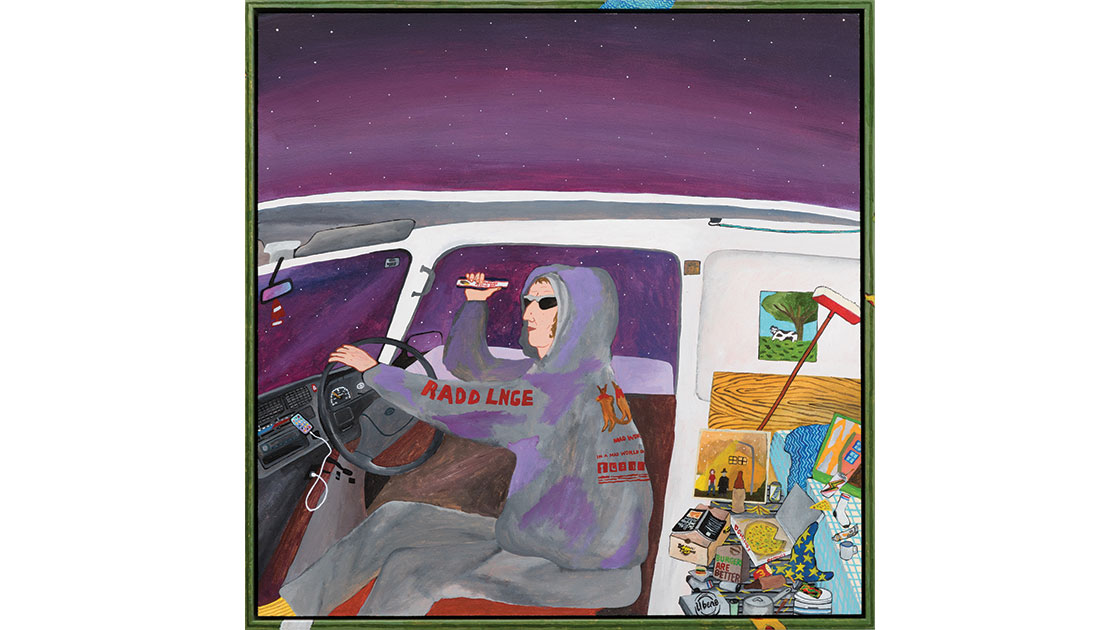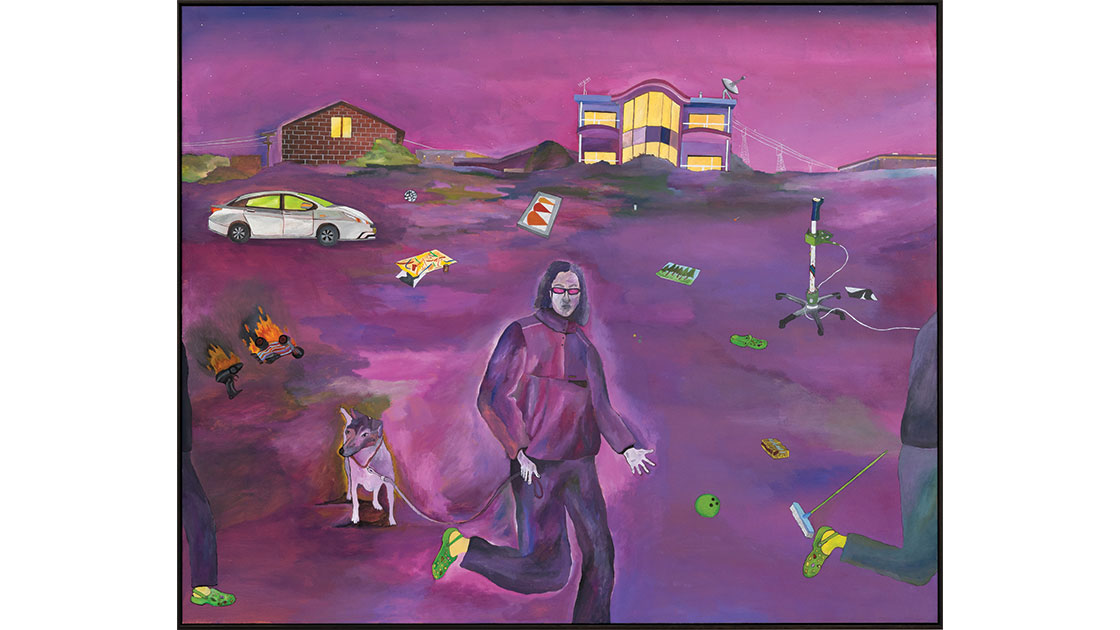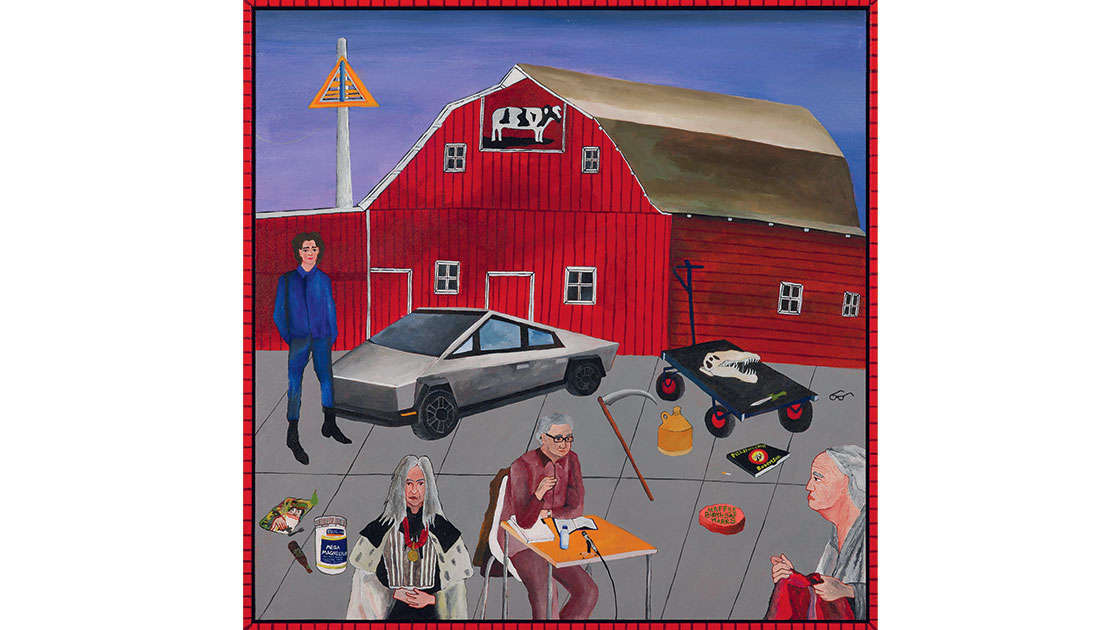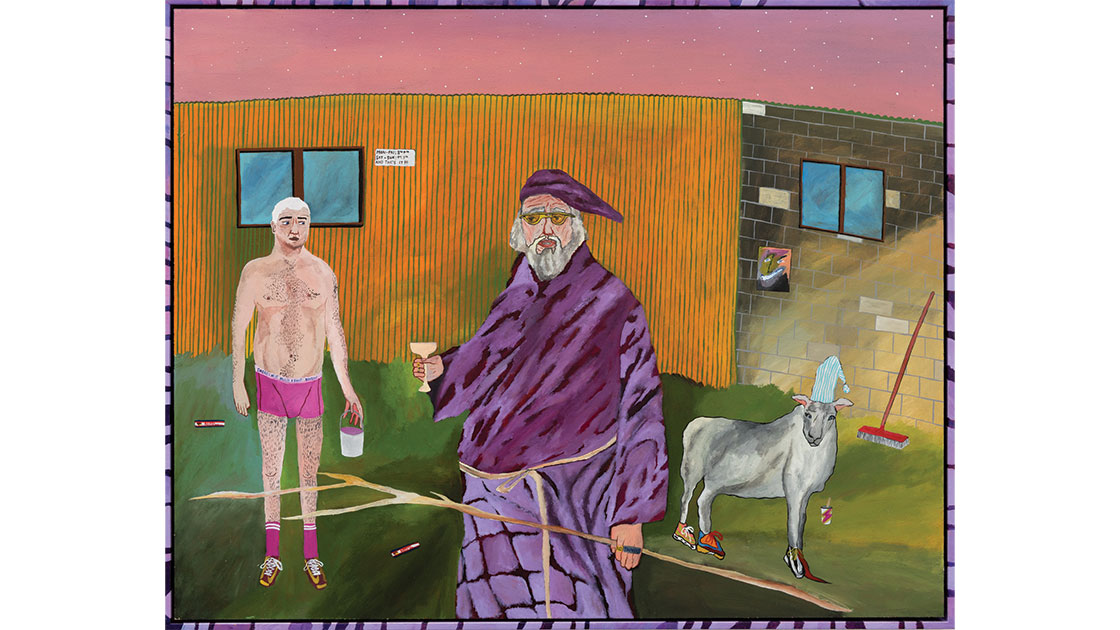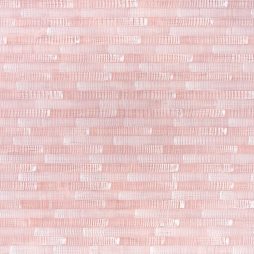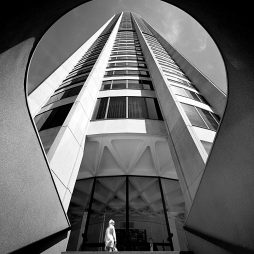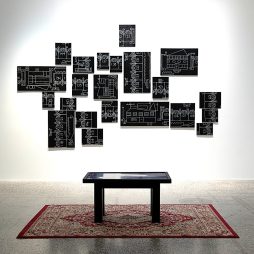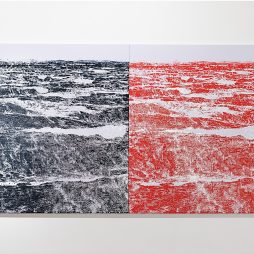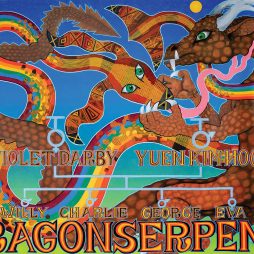Nick Santoro
Nick Santoro’s paintings are hard to ignore. Brightly coloured, crowded scenes populated by quirky characters and disparate objects invite close contemplation. Juxtaposing the absurd with the banal, pop culture with suburbia, Santoro humorously captures elements of Australian society. The artist and punk musician spoke to Bridget MacLeod for Artist Profile 51 from his studio in the seaside suburb of Thirroul. We are delighted to share their interview in celebration of Santoro's exhibition at the Melbourne Art Fair 2022 with the Egg & Dart.
You draw from a wide range of imagery and ideas. What are the major sources of inspiration for your works?
The process for gathering content to use in my paintings is a combination of information snacking, image hoarding and autobiographical content. What I’m exploring changes rapidly, governed by anything from music, art or ideas that I’ve shared with peers, to conversations with strangers at my places of work.
Although thematic odds and ends can shift frequently, some things remain constant. The various places in which I’ve lived or travelled always seem to influence what I’m doing. In addition to physical places, websites like Tzvetnik, AQNB, Contemporary Art Daily and Artviewer are inspirational places for me. Going out to openings and gigs was something I’ve always enjoyed, but since I started thinking about my paintings as social documents, seeing everyone’s fashion, gestures and behaviours play out in a social setting ended up becoming part of the process of gathering imagery and ideas.
What kind of people do you like painting?
I like painting characters who have a look or aura that speaks of things outside of themselves. People who’ve undertaken aesthetic choices dictated by the things they love or what they aspire to be – where you can no longer tell which is influencing which or if the character is the actor or vice versa. Sometimes I will aim to capture a likeness and other times I’ll start out with that intention and fail, but still include the character as an accidental, anomalous identity.
Your paintings juxtapose a number of elements. Are these spontaneous groupings or do you create deliberate connections?
Sometimes a work begins with the intention of drawing deliberate connections between objects, people and contexts, but most often I like to randomise the groupings of images from different sources in hopes of creating a pictorial space where narratives can be built by the viewer and correlations can happen in a less deliberate way. I hope, this way, meaning can vary from person to person.
You use a flat, crowded picture plane – what led you to this?
The flatness of acrylic painting is one of the things that attracted me to the medium in the first place. Crowding the picture plane was originally a way of leaving compositions open-ended. I was into the idea that there could always be another object or figure added even when the work felt mostly done.
When did you start painting and what do you like about this medium?
I’ve always made drawings, paintings and other things, but 2015 was when I started focusing mostly on painting. I enjoy painting in acrylic for its artificiality – when I paint with synthetic paint I feel like I’m painting with plastic. I’m attracted to acrylic because it dries quickly and gives the freedom of painting directly over things I don’t like and quickly adding other things to existing surfaces.
Do you plan works in advance?
The amount of planning changes from work to work. Sometimes works are negotiated entirely whilst painting. I don’t make preparatory sketches, but I constantly gather images into files on my computer or phone until a commonality emerges and I can harvest a theme from things I’ve accumulated. Peer review has also always been an important aspect of the way I work. I like knowing what people are thinking along the way.
You often paint the frames of your works . . .
I like to think the frames bring the paintings closer to being dioramas. That somehow they reinforce an aesthetic theme and make the paintings read more like objects of sculptural potentiality. I feel like the frames can dictate works and govern how I install a show. I also think the frames can help to make the informal works even more informal because most of the time I paint onto a frame what seems like the most obvious thing in the painting to reiterate.
What is the role of humour in your work?
I hope whatever degree of humour viewers find in my work delivers a sense of relief and a way for people to look at things based on real world happenings with a sense of fun and facetiousness. Sometimes the humour can play a slightly mocking role, taking the mickey out of things. I try to satirise things I find odd or am curious about or baffled by.
Your style has been described as “naïve.” What are your thoughts on this term?
Despite the potential for it to have varying connotations, I’ve noticed that when people mention this phrase it is often used to describe a lot of painting I admire. From my experience, people seem to use this word when describing “outsider art” or “folk art,” which are both genres I’ve found a great deal of pleasure in looking into.
We’re conducting this interview in amid the COVID-19 crisis. How do you think this will affect your practice?
It is hard to fully comprehend the magnitude of what is happening and the consequences of this moment whilst simultaneously deciphering the massive volume of information pouring out of every platform right now. It affects my work in the sense that I no longer have a day job, so I stay inside and paint all day. I don’t think I will deliberately make anything that is discernibly Covid-related, but it is inevitable that this crisis affects every facet of life. Since my paintings are social observations, it will undoubtedly influence what I find when I’m looking for things to work with, even if it is on a subconscious level.


